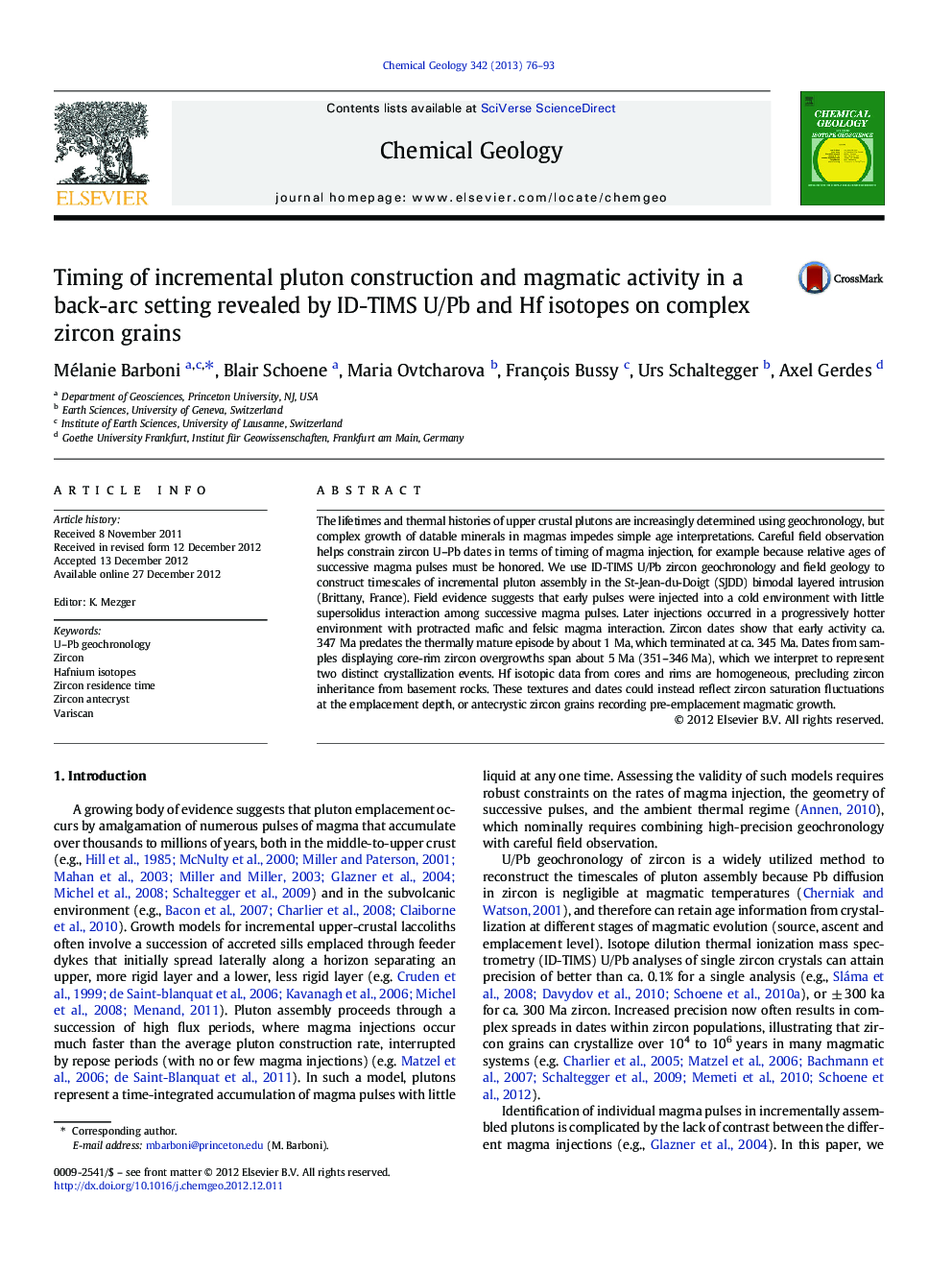| کد مقاله | کد نشریه | سال انتشار | مقاله انگلیسی | نسخه تمام متن |
|---|---|---|---|---|
| 4699071 | 1637626 | 2013 | 18 صفحه PDF | دانلود رایگان |

The lifetimes and thermal histories of upper crustal plutons are increasingly determined using geochronology, but complex growth of datable minerals in magmas impedes simple age interpretations. Careful field observation helps constrain zircon U–Pb dates in terms of timing of magma injection, for example because relative ages of successive magma pulses must be honored. We use ID-TIMS U/Pb zircon geochronology and field geology to construct timescales of incremental pluton assembly in the St-Jean-du-Doigt (SJDD) bimodal layered intrusion (Brittany, France). Field evidence suggests that early pulses were injected into a cold environment with little supersolidus interaction among successive magma pulses. Later injections occurred in a progressively hotter environment with protracted mafic and felsic magma interaction. Zircon dates show that early activity ca. 347 Ma predates the thermally mature episode by about 1 Ma, which terminated at ca. 345 Ma. Dates from samples displaying core-rim zircon overgrowths span about 5 Ma (351–346 Ma), which we interpret to represent two distinct crystallization events. Hf isotopic data from cores and rims are homogeneous, precluding zircon inheritance from basement rocks. These textures and dates could instead reflect zircon saturation fluctuations at the emplacement depth, or antecrystic zircon grains recording pre-emplacement magmatic growth.
► Complex ID-TIMS U/Pb zircon dates coupled to Hf isotopes help decipher in-situ and pre-emplacement pluton history.
► Antecrystic zircons record minimal overall lifespan of 5.7 to 8.4 Ma for a back-arc magmatic system.
► Source evolution may be tracked using antecrystic zircon chemistry.
► Autocrystic zircons record an intrusion in-situ emplacement of 0.8 to 2.6 Ma.
► Such time constraint allows modeling of the thermal evolution of the intrusion.
Journal: Chemical Geology - Volume 342, 29 March 2013, Pages 76–93